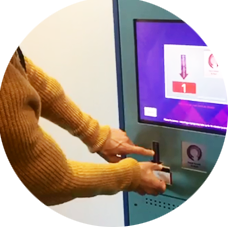Thanks to everyone for coming along to the June meetup.
The discussion on Enterprise Social Networks

Thanks to Lorne Grant who shared some ideas for introducing an Enterprise Social Network. The idea is to allow staff to communicate more effectively both vertically (particularly upwards) and horizontally (across departments). Lorne gave us an overview of the benefits of using a social network for staff and let us see an example of a ESN he has used previously – Workplace by Facebook. (Lorne’s slides are available on the UX group on Workplace.)
I was interested to hear from Laura Ennis that Napier already has other ESNs in place – Yammer and Sharepoint – but it seems that not everyone is aware that these are available. I am certainly in favour of anything that facilitates communication throughout the university, and I think it’s worth looking at the various options. I can see the advantage of Workplace because it has such a familiar interface and is therefore instantly easy to use.
Lorne was meeting with Microsoft to discuss their product so I look forward to hearing the outcome of that.
The LapSafe project

The UX Network are working collaboratively on a UX challenge suggested by James Mann – improving the LapSafe laptop loan system, using UX methodology:
DISCOVER, DEFINE, TEST, DEVELOP, TEST, DELIVER
So at this session we focused on the ‘Discovery’ phase: Understanding the Users, the Context, the Current User Journey and the Constraints.
We used Contextual Analysis to help us understand these things – I showed a video I had made of one of the library staff borrowing and returning a laptop so that we were all familiar with the process.
We mapped out the current User Journey for borrowing a laptop on a board and identified the pain points. This allows us to see what is working well and where there are issues.
Here is the User Journey and the Pain Points highlighted in green:

At this stage it’s important to focus just on Discovery. It is tempting to start solutioning, so if ideas come, we jot them down for the Define phase where we will start ideation. I look forward to moving forward with this at the next session.



